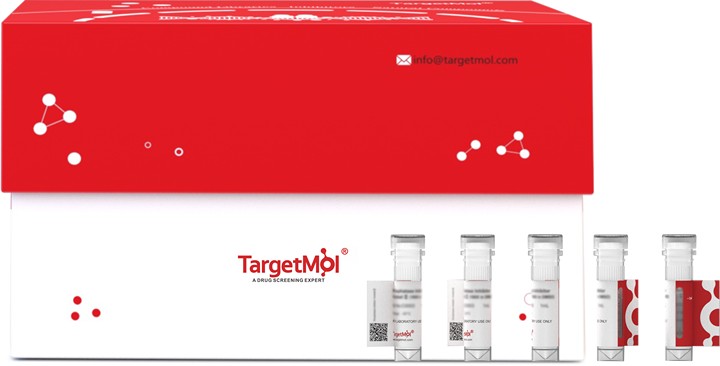Shopping Cart
Remove All Your shopping cart is currently empty
Your shopping cart is currently empty
BoNT/C Protein, Clostridium botulinum, Recombinant (His & SUMO) is expressed in E. coli.

| Pack Size | Price | USA Warehouse | Global Warehouse | Quantity |
|---|---|---|---|---|
| 5 μg | $129 | 20 days | 20 days | |
| 10 μg | $216 | 20 days | 20 days | |
| 20 μg | $360 | 20 days | 20 days | |
| 50 μg | $543 | 20 days | 20 days | |
| 100 μg | $745 | 20 days | 20 days | |
| 200 μg | $1,070 | 20 days | 20 days | |
| 500 μg | $1,730 | 20 days | 20 days | |
| 1 mg | $2,530 | 20 days | 20 days |
| Biological Activity | Activity has not been tested. It is theoretically active, but we cannot guarantee it. If you require protein activity, we recommend choosing the eukaryotic expression version first. |
| Description | BoNT/C Protein, Clostridium botulinum, Recombinant (His & SUMO) is expressed in E. coli. |
| Species | Clostridium botulinum C phage |
| Expression System | E. coli |
| Tag | N-6xHis-SUMO |
| Accession Number | P18640 |
| Synonyms | Botulinum neurotoxin type C1,Botulinum neurotoxin type C,Bontoxilysin-C1 (BoNT/C1),BoNT/C |
| Amino Acid | PITINNFNYSDPVDNKNILYLDTHLNTLANEPEKAFRITGNIWVIPDRFSRNSNPNLNKPPRVTSPKSGYYDPNYLSTDSDKDPFLKEIIKLFKRINSREIGEELIYRLSTDIPFPGNNNTPINTFDFDVDFNSVDVKTRQGNNWVKTGSINPSVIITGPRENIIDPETSTFKLTNNTFAAQEGFGALSIISISPRFMLTYSNATNDVGEGRFSKSEFCMDPILILMHELNHAMHNLYGIAIPNDQTISSVTSNIFYSQYNVKLEYAEIYAFGGPTIDLIPKSARKYFEEKALDYYRSIAKRLNSITTANPSSFNKYIGEYKQKLIRKYRFVVESSGEVTVNRNKFVELYNELTQIFTEFNYAKIYNVQNRKIYLSNVYTPVTANILDDNVYDIQNGFNIPKSNLNVLFMGQNLSRNPALRKVNPEN |
| Construction | 2-428 aa |
| Protein Purity | > 90% as determined by SDS-PAGE. |
| Molecular Weight | 64.9 kDa (predicted) |
| Endotoxin | < 1.0 EU/μg of the protein as determined by the LAL method. |
| Formulation | Tris-based buffer, 50% glycerol |
| Reconstitution | A Certificate of Analysis (CoA) containing reconstitution instructions is included with the products. Please refer to the CoA for detailed information. |
| Stability & Storage | Lyophilized powders can be stably stored for over 12 months, while liquid products can be stored for 6-12 months at -80°C. For reconstituted protein solutions, the solution can be stored at -20°C to -80°C for at least 3 months. Please avoid multiple freeze-thaw cycles and store products in aliquots. |
| Shipping | In general, Lyophilized powders are shipping with blue ice. Solutions are shipping with dry ice. |
| Research Background | Botulinum toxin causes flaccid paralysis by inhibiting neurotransmitter (acetylcholine) release from the presynaptic membranes of nerve terminals of the eukaryotic host skeletal and autonomic nervous system, with frequent heart or respiratory failure. Is unique among characterized BoNTs in having 2 substrates, syntaxin (STX) and SNAP25. Precursor of botulinum neurotoxin C which unlike most BoNTs seems not to have a proteinaceous coreceptor, and instead recognizes 2 different complex polysialylated gangliosides found on neural tissue probably found in synaptic vesicles. Upon synaptic vesicle recycling the toxin is taken up via the endocytic pathway. When the pH of the toxin-containing endosome drops a structural rearrangement occurs so that the N-terminus of the heavy chain (HC) forms pores that allows the light chain (LC) to translocate into the cytosol. Once in the cytosol the disulfide bond linking the 2 subunits is reduced and LC cleaves its target protein on synaptic vesicles, preventing their fusion with the cytoplasmic membrane and thus neurotransmitter release. In vitro the whole toxin only has protease activity after reduction. Electrical stimulation increases uptake of toxin, presumably by transiently exposing a receptor usually found in eukaryotic target synaptic vesicles. Forms ion-conducting channels at around pH 6.1. Requires complex eukaryotic host polysialogangliosides for full neurotoxicity. Synaptic vesicle glycoproteins (SV2) do not seem to act as its receptor.; Has proteolytic activity. After translocation into the eukaryotic host cytosol, inhibits neurotransmitter release by acting as a zinc endopeptidase that cleaves syntaxin-1A/STX1A and syntaxin-1B/STX1B. Cleaves the '253-Arg-|-Ala-254' bond of STX1 and the '252-Arg-|-Ala-253' bond of STX2; also acts on syntaxin 3 (STX3) but not 4 (STX4). Cleaves the '198-Arg-|-Ala-199' bond of SNAP25. Recognizes the '93-Asn--Met-202' region of SNAP25.; Responsible for host epithelial cell transcytosis, host nerve cell targeting and translocation of light chain (LC) into eukaryotic host cytosol. Composed of 3 subdomains; the translocation domain (TD), and N-terminus and C-terminus of the receptor-binding domain (RBD). The RBD is responsible for the adherence of the toxin to the eukaryotic target cell surface. It simultaneously recognizes 2 polysialated gangliosides coreceptors in close proximity on host synaptic vesicles. The N-terminus of the TD wraps an extended belt around the perimeter of the LC, protecting Zn(2+) in the active site; it may also prevent premature LC dissociation from the translocation channel and protect toxin prior to translocation. The TD inserts into synaptic vesicle membrane to allow translocation into the host cytosol. The C-terminal half of the HC (residues 864-1291) binds neurons in a dose-dependent manner. The C-terminal half of the HC (residues 863-1291) binds eukaryotic host gangliosides in the order GD1b > GT1b > GD1a > GM1a. Has 2 ganglioside binding sites; Sia-1 prefers a sia7 sialic acid and sugars within the ganglioside (GD1b > GT1b), whereas GBP2 recognizes a sia5 sialic acid (GT1b and GD1a). Both sites are required for HC to enter neurons, acting via different gangliosides. This suggests that 2 gangliosides serve as toxin receptors. Synaptic activity (depolarization with K(+)) increases uptake by neurons. Treatment of synaptosomes with proteinase K does not reduce HC binding, suggesting there is no protein receptor or it is protected from extracellular proteases. Decreases uptake and toxicity of whole BoNT/A, but also interferes with uptake of BoNT/E and BoNT/F. HC also binds phosphoinositides, which might play a role in membrane-binding. |
| Size | Quantity | Unit Price | Amount | Operation |
|---|

Copyright © 2015-2026 TargetMol Chemicals Inc. All Rights Reserved.